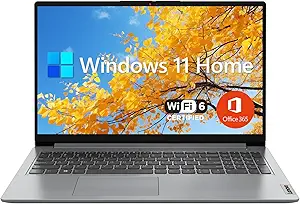The Ultimate Showdown
Lenovo vs ASUS Laptops - Deciphering the Paragons of Performance and Innovation
In the vast realm of laptop computing, two formidable contenders, Lenovo and ASUS, stand as pillars of innovation and reliability. With their commitment to pushing the boundaries of design and functionality, these brands have earned the admiration of users worldwide. As we embark on this journey of comparison, we delve into the intricacies of Lenovo and ASUS laptops, unraveling the distinct features and strengths that define them. Join us as we uncover which brand emerges victorious in this epic clash of tech titans.
Key Features Comparison
Product Selection
When it comes to product selection, both Lenovo and Asus offer a wide range of laptop options to cater to various user needs. Lenovo laptops, known for their robust build and reliable performance, have a diverse product portfolio that includes the ThinkPad series for business professionals, the Yoga series for flexibility and portability, and the Legion series for gamers. The latest Lenovo laptops come equipped with cutting-edge technologies such as 11th Gen Intel Core processors, NVIDIA GeForce RTX 30 Series graphics, and Wi-Fi 6. On the other hand, Asus laptops also offer a broad product selection with distinct lines for different user segments. The ZenBook series is renowned for its sleek design and powerful performance, the VivoBook series is popular among students and casual users for its affordability and vibrant color options, and the ROG (Republic of Gamers) series is a favorite among gamers for its high-end gaming features. Asus laptops also feature the latest technologies, such as AMD Ryzen 5000 Series processors, NVIDIA GeForce RTX 30 Series graphics, and AI noise-canceling technology. While both brands offer a wide array of options, Asus tends to have a slight edge in terms of design innovation, with features like the ScreenPad (a touchscreen that replaces the traditional touchpad) and ErgoLift hinge (for better typing comfort). However, Lenovo is often praised for its superior build quality and keyboard design.
Affordability
When it comes to the aspect of price, both Lenovo and Asus laptops offer a wide range of options to cater to different budget categories. Lenovo laptops, known for their durability and high performance, are priced competitively. Their latest model, the Lenovo ThinkPad X1 Carbon, is a premium laptop that offers advanced features such as 10th Gen Intel Core processors and up to 19.5 hours of battery life, but it comes with a higher price tag. On the other hand, Lenovo also offers budget-friendly options such as the Lenovo IdeaPad series, which are well-suited for everyday use and come at a lower price point. Asus, on the other hand, is known for its innovative designs and gaming laptops. Their high-end models like the Asus ROG Zephyrus offer top-notch gaming performance with the latest Nvidia RTX 3080 GPU and AMD Ryzen 9 processors, but they are priced on the higher end of the spectrum. However, Asus also offers budget-friendly laptops like the Asus VivoBook series, which are competitively priced and offer decent performance for everyday tasks. In comparison to other brands, both Lenovo and Asus offer good value for money, with Lenovo being slightly more affordable in the premium range, and Asus offering more features in the budget range.
Reputation
Lenovo and Asus are both renowned brands in the laptop market, each with its own unique reputation. Lenovo, a Chinese multinational technology company, is known for its robust, reliable, and high-performing laptops. The brand has been recognized for its innovation in design and technology, with its ThinkPad and Yoga series being particularly popular among both professionals and casual users. Lenovo's reputation for durability and long-lasting performance is well-earned, with many users reporting that their laptops have lasted for several years without significant issues. However, some users have reported issues with customer service and warranty support, which can potentially tarnish the brand's reputation. On the other hand, Asus, a Taiwanese multinational computer hardware and electronics company, has a reputation for providing high-quality laptops with excellent gaming capabilities. The brand's ROG (Republic of Gamers) series is highly regarded among gamers for its powerful performance, superior graphics, and innovative cooling systems. Asus laptops are also known for their sleek designs and high-quality displays. However, like Lenovo, Asus has also faced criticism regarding its customer service. Some users have reported difficulties in getting timely and effective support when facing technical issues. Comparatively, both brands have established a strong reputation in the laptop market, each excelling in different areas - Lenovo in durability and performance, and Asus in gaming capabilities and design.
Battery Life
Lenovo laptops are known for their impressive battery life, with some models like the Lenovo ThinkPad T480s offering up to 17.4 hours of battery life. The latest Lenovo laptops are equipped with Rapid Charge technology that can provide 80% battery capacity in just an hour of charging. However, the battery life can vary significantly depending on the specific model and configuration, with high-performance models like the Lenovo Legion Y740 having a much shorter battery life due to their powerful hardware. On the other hand, Asus laptops also offer competitive battery life. The Asus ExpertBook B9450, for instance, boasts an exceptional battery life of up to 24 hours, making it one of the best in the market in this aspect. Asus also incorporates fast-charging technology in their laptops, allowing users to charge their laptops up to 60% in just 49 minutes. However, similar to Lenovo, the battery life of Asus laptops can greatly differ based on the model and hardware configuration. High-end gaming laptops like the Asus ROG Strix Scar III have a shorter battery life due to their high-performance requirements. Both Lenovo and Asus offer excellent battery life in their laptops, but the exact duration can vary greatly depending on the specific model and usage.
Display
Lenovo and Asus laptops both offer high-quality displays, but they each have unique features that set them apart. Lenovo laptops, such as the ThinkPad X1 Carbon, come with a 14-inch 4K UHD (3840 x 2160) HDR400 display that delivers vibrant and sharp images. The display is also equipped with Dolby Vision, which enhances the color and brightness, providing an immersive viewing experience. However, some users have reported that the glossy screen can cause reflections in brightly lit environments. On the other hand, Asus laptops, particularly the ROG Zephyrus G14 model, boast a 14-inch Non-glare WQHD (2560 x 1440) IPS-level panel, which is perfect for gaming and video editing due to its high refresh rate and response time. The Pantone Validated display ensures color accuracy, which is critical for graphic designers and photographers. However, it lacks the HDR technology found in Lenovo laptops, which might result in less vibrant colors. Comparatively, both brands offer high-quality displays, but the choice between the two would depend on the specific needs and preferences of the user.
Conclusion
In the clash of Lenovo vs. ASUS laptops, both brands offer compelling options tailored to different preferences and priorities. Lenovo excels in reliability, performance, and professional-grade features, making it the ideal choice for professionals and business users who demand the utmost in productivity. ASUS, on the other hand, shines in design, innovation, and affordability, appealing to users who value style, versatility, and value for money. Ultimately, the choice between Lenovo and ASUS laptops depends on individual preferences, whether it's a preference for reliability and performance or design and affordability. Whichever path you choose, both Lenovo and ASUS continue to push the boundaries of laptop technology, driving innovation and inspiring users worldwide. So, whether you're team Lenovo or team ASUS, rest assured that the future of laptop computing is in capable hands, thanks to these two industry giants.


















